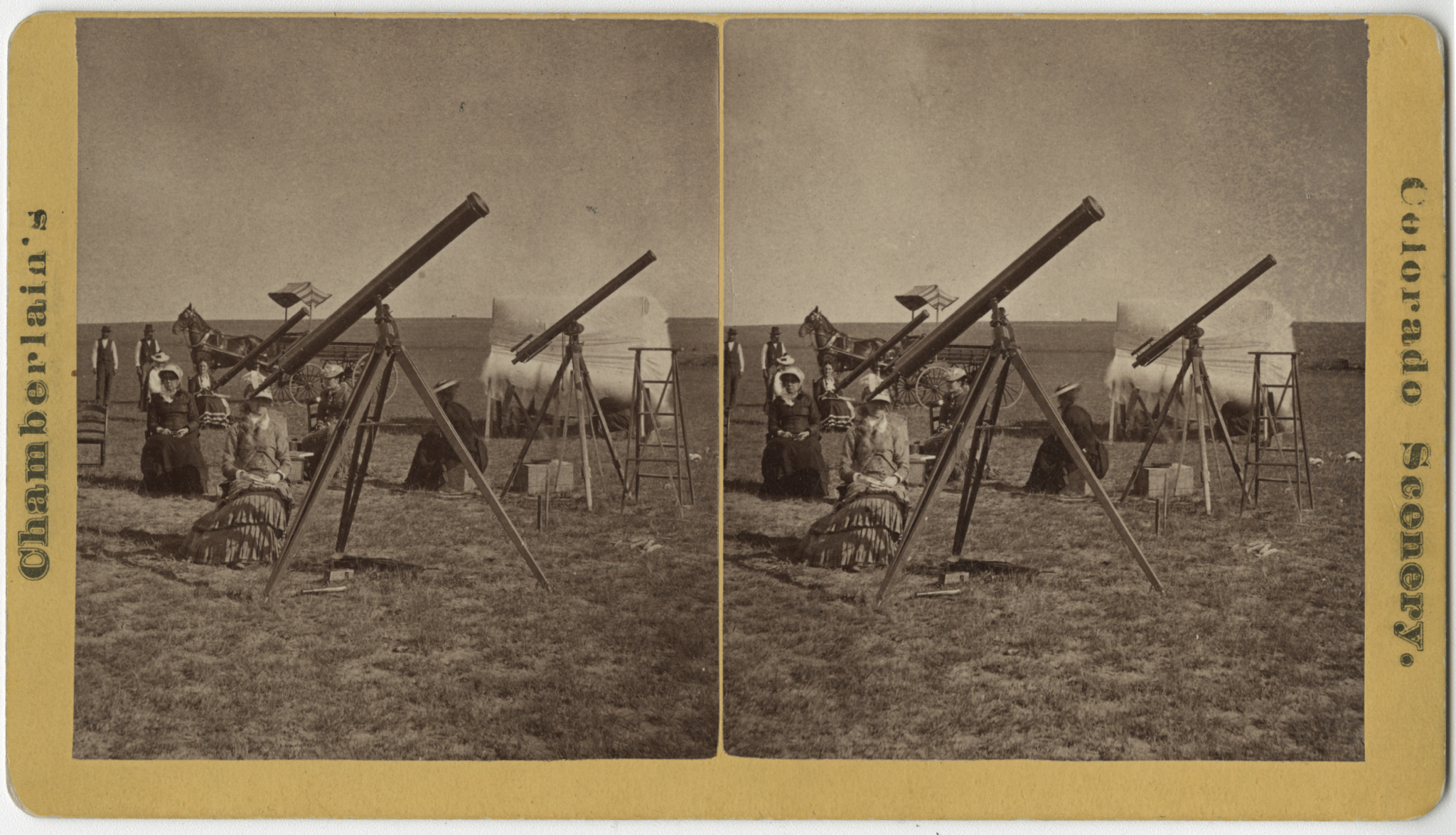
As Americans buy up special eclipse glasses and flock to one of the dozen states that will see a total solar eclipse on Monday, authorities have become concerned about whether there will be enough bathrooms, hotels, restaurants or supermarkets to sustain these tourists.
The hype surrounding this summer’s eclipse is “remarkably similar” to the kind that swept the U.S. in the walk-up to the eclipse of July 29, 1878, which was seen from the Montana territory to Texas, says David Baron, author of American Eclipse.
Astronomer Fredrich Bessel had finalized the math necessary to predict solar eclipses in 1824 and the transcontinental railroad had been built in 1869, so the ingredients were in place for a much-anticipated event. The U.S. Naval Observatory helped gin up enthusiasm by publishing a booklet of instructions, which included information about what to expect on the big day: “The following phenomena will be seen during the totality, if the sky is clear. Just as the sun’s last ray fades out, some glowing points of light will start into view, hanging upon the edge of the black moon and glistening like rubies; while surrounding the whole will be seen a halo whose mild radiance reminds the beholder of the glories with which the painters of old adorned the heads of saints.”
Eclipse-mania was on.
In June 1878, the Chicago Times began reporting of the “mammoth excursion from the [Great] lakes to the mountains.” In Denver, many businesses closed, and people poured into the streets. The Colorado Chieftain reported that the windows in church steeples that would face the eclipse had been leased for 50 cents, and tents in the Garden of the Gods public park sold for 25 cents each. Scientists from Princeton ended up “glamping,” as Baron puts it, in a grove of cottonwoods on the outskirts of Denver, where they had their own cook and a private launderer. The best view was at Pikes Peak, but it came at a price. Some scientists got to the area a week in advance to climb up and set up camp there, but were plagued by snowstorms and altitude sickness. Cleveland Abbe, known as the father of the National Weather Service, had to be carted out on a stretcher. Hotels ran out of rooms, and tourists who didn’t get a cot had to beg residents of private homes to let them stay. One man reportedly slept on a pool table. In the railroad town of Rawlins, Wyo., Thomas Edison had to share a room with New York Herald Tribune reporter Edwin Marshall Fox.
And the market for eclipse glasses — which at the time were made with shards of clear glass blackened over a candle or by fitting blue glass in the bottom of boxes or the tops of old stove pipe hats — saw a boom too: One Denver newsboy was believed to have made as much as $70 selling bootleg eclipse glasses.
Yet nothing could prepare eclipse-watchers for what they did see when totality occurred in a sky that a Denver Times reporter stationed in Castle Rock described as “Weather splendid for eclipse — clear as hell.”
A Denver sheep herder said the scene looked like “a black carpet sliding over the plains,” while a Pikes Peak observer described it as “a rounded ball of darkness with an orange-yellow border fading into the light pea-green of the landscape,” according to Baron’s book. The Denver Daily Tribune reported, “Cheer after cheer echoed and re-echoed among the surrounding mountains,” and revelers on Grays Peak, a summit west of Denver, fired revolvers to celebrate and broke out into “My Country ‘Tis of Thee.” Another newspaper reported Coloradans were the “favored mortals of earth.”
But, while the event attracted notable scientists, no notable scientific discoveries came out of it. Edison brought a “tasimeter” he designed to detect heat at a distance to Wyoming, but it ended up not working well. And while astronomer and asteroid hunter James Craig Watson claimed he saw “Vulcan,” a planet between Mercury and the Sun said to only be visible during a total eclipse, now experts believe he probably just saw a star. (Vulcan only exists on Star Trek.)
In fact, news coverage suggests that the most significant “discovery” may have been the fact that women were interested in science.
Vassar College astronomer Maria Mitchell didn’t get funding for her trip to see the eclipse because she was a woman, but that didn’t stop her and five female scientists from going out to Denver to see it anyway — or as one reporter put it, “sweeping the heavens with a four-inch telescope” with her “assistant nymphs.” Another report described the sight of the all-female science expedition as “an attraction to the gaping, yet respectfully distant, multitude of masculines, almost as absorbing as the eclipse.” A few news articles did recognize the significance of their presence. The New York Sun reported, “The success of this party is one more and pointed arrow in the quiver of woman suffrage argument and logic.”
Today, because of the growth of air travel, globetrotters have more ways to travel to eclipse viewing sites and document the occurrence than ever before — but the sense of awe produced by feats of nature is timeless.
More Must-Reads from TIME
- Donald Trump Is TIME's 2024 Person of the Year
- Why We Chose Trump as Person of the Year
- Is Intermittent Fasting Good or Bad for You?
- The 100 Must-Read Books of 2024
- The 20 Best Christmas TV Episodes
- Column: If Optimism Feels Ridiculous Now, Try Hope
- The Future of Climate Action Is Trade Policy
- Merle Bombardieri Is Helping People Make the Baby Decision
Write to Olivia B. Waxman at olivia.waxman@time.com